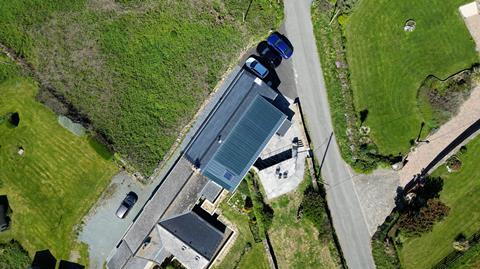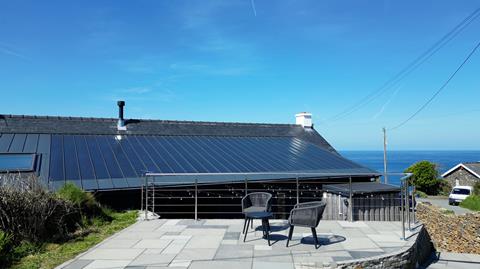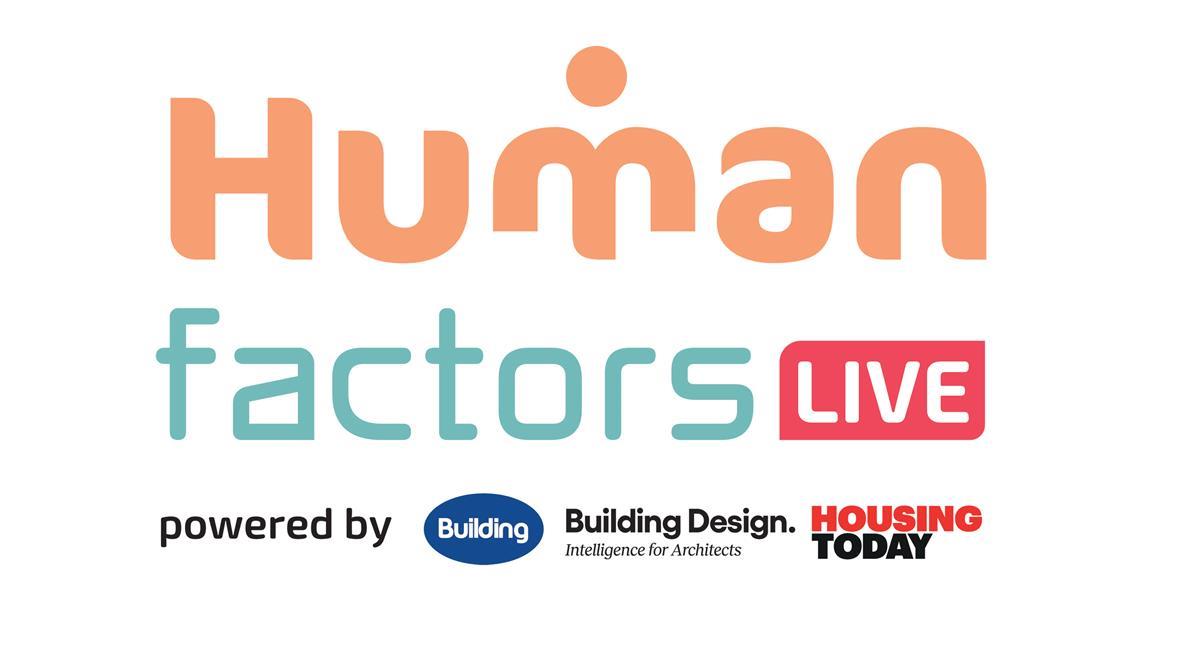The new system integrates flexible solar laminates with standing seam panels, aiming to combine renewable energy generation with design adaptability and fire safety compliance

Catnic, a manufacturer of steel building products, has introduced Solarseam – a photovoltaic (PV) system designed specifically for standing seam roofs. According to the manufacturer, the system integrates flexible solar laminates bonded directly onto Catnic’s urban standing seam roofing panels, aiming to provide solar energy generation with a low-profile appearance.
Solarseam is reportedly compatible with roof pitches as low as five degrees, which the team suggests offers increased design flexibility compared to conventional solar installations. The product is supplied as a complete kit including panels, flashings and fixings, designed for straightforward ordering and installation.
The system employs Copper Indium Gallium Selenide (CIGS) solar technology. According to Catnic, the MCS-certified CIGS cells incorporate multiple diodes to enhance performance in ambient light conditions and improve shade tolerance compared to traditional monocrystalline panels. The manufacturer claims that shading reduces energy output by up to 80% in monocrystalline panels but by as little as 10% in CIGS panels. Additionally, the cells are described as lighter, more flexible, and more resistant to damage and cracking.

Catnic states that the CIGS cells are manufactured in the UK and require less energy to produce than monocrystalline alternatives, potentially resulting in a lower carbon footprint. The urban standing seam panels used as the substrate are also UK-made, with BES 6001 Responsible Sourcing certification and a BRE A+ environmental rating.
Regarding fire safety, the bonded panel system has been tested under CEN/TS 1187-4 and classified BROOF(t4), the highest external fire rating under this standard. This classification indicates minimal flame spread and no penetration for at least 60 minutes.
Amanda Hinks-Edwards, business manager at Catnic, commented on the product launch, noting government targets for a 68% reduction in greenhouse gas emissions by 2030 and indications that solar panels may become mandatory on all new homes from 2027. She suggested that Solarseam could suit both new build and refurbishment projects, offering solar performance combined with design flexibility and aesthetics.

















No comments yet